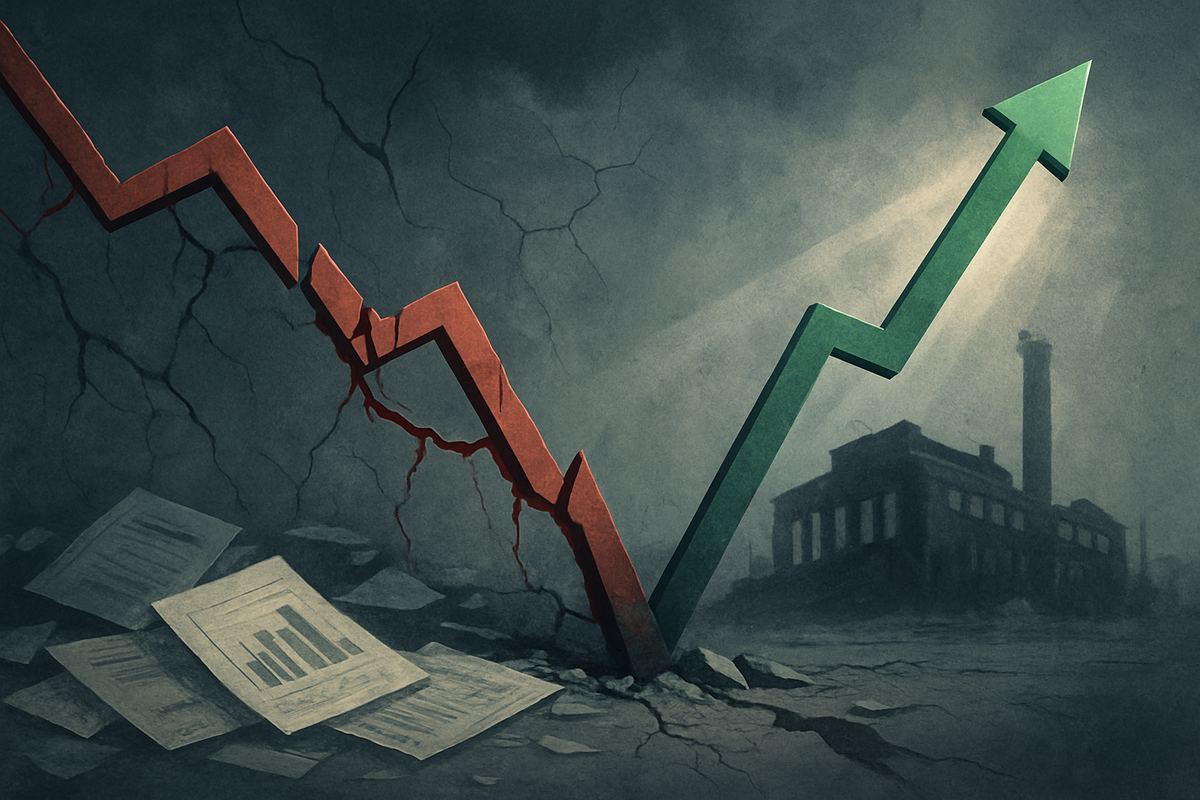
The financial markets are grappling with the reverberations of the First Brands Group bankruptcy, an event that has particularly cast a shadow over Jefferies Financial Group (NYSE: JEF). In a swift and decisive move, Jefferies has stepped forward to reassure investors, attempting to calm a market rattled by the sudden collapse of the automotive parts giant and the subsequent discovery of Jefferies' significant, albeit indirect, exposure. The immediate aftermath saw Jefferies' stock take a considerable hit, prompting its leadership to issue a public statement on Sunday, October 13, 2025, aimed at restoring confidence and mitigating further losses.
The bankruptcy of First Brands Group, a major player in the aftermarket auto parts sector, has sent a clear warning signal across the financial landscape. With liabilities estimated to be well over $10 billion, the company's downfall has raised serious questions about financial oversight and the risks embedded in complex financing arrangements. Jefferies, through its Leucadia Asset Management division, found itself entangled due to substantial receivables tied to First Brands, leading to an immediate and sharp downturn in its share price. The firm's proactive communication underscores the urgency with which it is addressing investor anxieties, emphasizing its robust financial standing and the absorbable nature of potential losses.
Unpacking the Collapse: A Deep Dive into First Brands and Jefferies' Exposure
First Brands Group, a key supplier of automotive components such as filters, brakes, and lighting systems, officially filed for Chapter 11 bankruptcy protection in the U.S. Bankruptcy Court for the Southern District of Texas on September 28, 2025, with certain non-operational entities preceding this on September 24, 2025. The initial estimates of liabilities, around $6 billion, quickly escalated to over $10 billion, dwarfing its assets valued between $1 billion and $10 billion. The root cause appears to be a reliance on opaque financial practices, including shadow banking and invoice financing, with investigations uncovering allegations of significant irregularities like the potential double-pledging of invoices and commingling of assets, leading to reports of $2.3 billion in financing effectively "vanishing." The U.S. Department of Justice has reportedly initiated an inquiry into these concerning circumstances.
Jefferies Financial Group (NYSE: JEF) discovered its indirect, yet substantial, exposure through its Leucadia Asset Management division's credit fund, Point Bonita. This fund held approximately $715 million in receivables linked to First Brands, representing about 25% of Point Bonita's total trade finance portfolio. Point Bonita had been engaged in factoring, purchasing these accounts receivables from First Brands since 2019. However, the critical flow of payments from First Brands abruptly ceased on September 15, 2025, just weeks before the bankruptcy filing. Additionally, Jefferies held a smaller, roughly $2 million, interest in First Brands' bank loans via its Apex platform. Despite a decade-long banking relationship with First Brands, Jefferies firmly stated that no one within the firm was aware of any fraudulent activity at the supplier.
The market's reaction was swift and unforgiving. Upon the disclosure of Jefferies' exposure on October 8, 2025, shares of Jefferies Financial Group (NYSE: JEF) plummeted, falling 3.7% in premarket trading and an alarming 8% in a single day, from $59.10 to $54.44. Over the week leading up to October 13, 2025, the stock shed 18.7% of its value, translating to hundreds of millions in lost market capitalization. Investor sentiment on social platforms turned decidedly bearish, and some investors began seeking redemptions from Point Bonita. The broader debt markets also exhibited caution, with the First Brands collapse, alongside other recent financial distress, fueling concerns about systemic stress in corporate debt and intensifying scrutiny of complex financing mechanisms.
To counter this negative momentum, Jefferies' CEO Rich Handler and President Brian Friedman released a public letter on Sunday, October 13, 2025. They assured the market that any projected financial losses from the First Brands bankruptcy would be "relatively low" and "readily absorbable," estimating direct indirect investments at approximately $43 million through Point Bonita's accounts receivable and about $2 million in bank loans. The letter underscored Jefferies' robust financial health, citing $10.5 billion in total equity and $8.5 billion in tangible equity as of August 31, 2025, alongside a substantial $11.5 billion in cash. They also highlighted strong third-quarter results and an expanding strategic alliance with SMBC, which includes $2.5 billion in new credit facilities and SMBC's intent to increase its ownership stake in Jefferies from 14.5% to up to 20%. Following this reassuring statement, Jefferies' stock saw a 3% advance on Monday, October 13, 2025.
Market Dynamics: Who Wins and Who Loses?
The implosion of First Brands Group has created a clear distinction between potential winners and losers in the automotive aftermarket and financial sectors. On the losing side, First Brands Group itself is navigating a complex and likely protracted bankruptcy process, facing allegations of financial misconduct and a significant restructuring challenge. Investors in First Brands, particularly those holding equity, are facing substantial losses, if not a complete wipeout. Jefferies Financial Group (NYSE: JEF), despite its efforts to mitigate concerns, has already absorbed a significant blow to its market capitalization and faces potential financial losses from its exposure through Point Bonita, along with a temporary but notable hit to its reputation. Investors in Point Bonita, the credit fund, are also experiencing uncertainty and have initiated redemption requests, signaling a direct impact on their portfolios.
Conversely, competitors in the automotive aftermarket industry may stand to benefit. As First Brands Group struggles to maintain operations and supply chains, rivals could seize the opportunity to capture market share, expand their customer base, and potentially acquire distressed assets at favorable terms. This situation could accelerate consolidation within the sector. In the financial realm, while the immediate reaction was one of caution, other financial institutions with more stringent due diligence processes or less exposure to complex factoring arrangements might gain credibility. Furthermore, SMBC's (TYO: 8316) strategic alliance with Jefferies, including its intention to increase its ownership stake, could be seen as a long-term win for SMBC, potentially acquiring a larger share of a resilient investment bank at a time when its valuation might be temporarily depressed. The increased scrutiny on trade finance could also lead to a flight to quality, benefiting lenders with transparent and robust underwriting practices.
Broader Implications and Historical Context
The First Brands Group bankruptcy is more than just a corporate failure; it serves as a stark reminder of the risks associated with opaque financial practices, particularly in areas like shadow banking and invoice financing. This event fits into a broader trend of increased scrutiny on complex financial instruments and non-bank lending, which have grown significantly in recent years. The alleged financial irregularities, including potential double-pledging of invoices and commingling of assets, highlight systemic vulnerabilities that can arise when oversight is insufficient and transparency is lacking. This incident will likely trigger a deeper examination of the entire trade finance ecosystem, potentially leading to more stringent requirements for due diligence and reporting.
The ripple effects extend beyond the immediate players. Other automotive parts suppliers might face heightened scrutiny from their lenders and investors, even if their financial health is robust. Financial firms involved in similar factoring arrangements will undoubtedly review their portfolios and risk management practices, anticipating increased caution from investors and potentially higher compliance costs. The U.S. Department of Justice's inquiry signals potential regulatory and policy implications, suggesting that this event could lead to new regulations or enforcement actions aimed at preventing similar collapses. While specific historical precedents for an event of this exact nature and scale are not readily available, it echoes past corporate scandals where financial irregularities and a lack of transparency ultimately led to significant market disruption and calls for reform, reinforcing the notion that robust governance and clear financial reporting are paramount for market stability and investor confidence.
What Comes Next: Navigating the Path Forward
In the short term, the market can expect continued volatility surrounding Jefferies Financial Group (NYSE: JEF) shares as investors fully digest the implications of the First Brands bankruptcy and Jefferies' mitigation strategies. The ongoing investigations by First Brands' Chief Restructuring Officer and the U.S. Department of Justice will be critical, as their findings could shed more light on the extent of the alleged fraud and the recovery prospects for creditors. Jefferies' upcoming Annual Investor Meeting will be a pivotal event, where management is expected to provide further details on its performance, outlook, and specific measures taken to address the First Brands situation, which will be closely watched by the market for further reassurance.
Looking further ahead, the long-term possibilities include a significant restructuring of First Brands Group, which could involve asset sales and a prolonged legal process to resolve creditor claims. For the broader financial industry, this event could catalyze a shift in trade finance practices, leading to a greater emphasis on transparency, robust verification of receivables, and potentially more conservative lending criteria. Jefferies' strategic alliance with SMBC (TYO: 8316) will continue to evolve, with SMBC's increased ownership stake potentially strengthening Jefferies' capital base and strategic positioning in the market. This situation presents both market challenges and opportunities: while the immediate challenge is restoring investor confidence and managing potential losses, opportunities may arise for firms that can offer more secure and transparent financing solutions, or for competitors of First Brands to expand their market footprint. Potential scenarios range from a relatively contained financial impact for Jefferies, as management suggests, to a more widespread re-evaluation of risk in complex corporate financing structures.
A Comprehensive Wrap-Up: Market Vigilance Ahead
The First Brands Group bankruptcy and Jefferies' subsequent efforts to calm investor worries serve as a powerful testament to the interconnectedness of financial markets and the critical importance of transparency. The key takeaway from this event is the significant risk inherent in opaque financial instruments and the potential for rapid contagion when financial irregularities come to light. Jefferies' swift communication, emphasizing its strong financial position and the absorbable nature of potential losses, has been a crucial step in stabilizing its own market valuation, but the broader implications for trade finance and corporate governance will resonate for some time.
Moving forward, the market will undoubtedly operate with increased caution, particularly concerning companies employing complex and less transparent financing methods. There will be a heightened demand for rigorous due diligence and clear financial reporting. The lasting impact of this event will likely be a renewed focus on regulatory oversight in non-bank lending and factoring, potentially leading to a more robust framework for risk management across the financial sector. Investors should closely monitor the progress of the DOJ investigation into First Brands, Jefferies' subsequent financial reports for concrete evidence of its resilience, and any forthcoming regulatory changes that might affect trade finance. The unfolding story of First Brands and Jefferies will serve as a crucial case study in corporate risk management and market response in the months and years to come.
This content is intended for informational purposes only and is not financial advice





